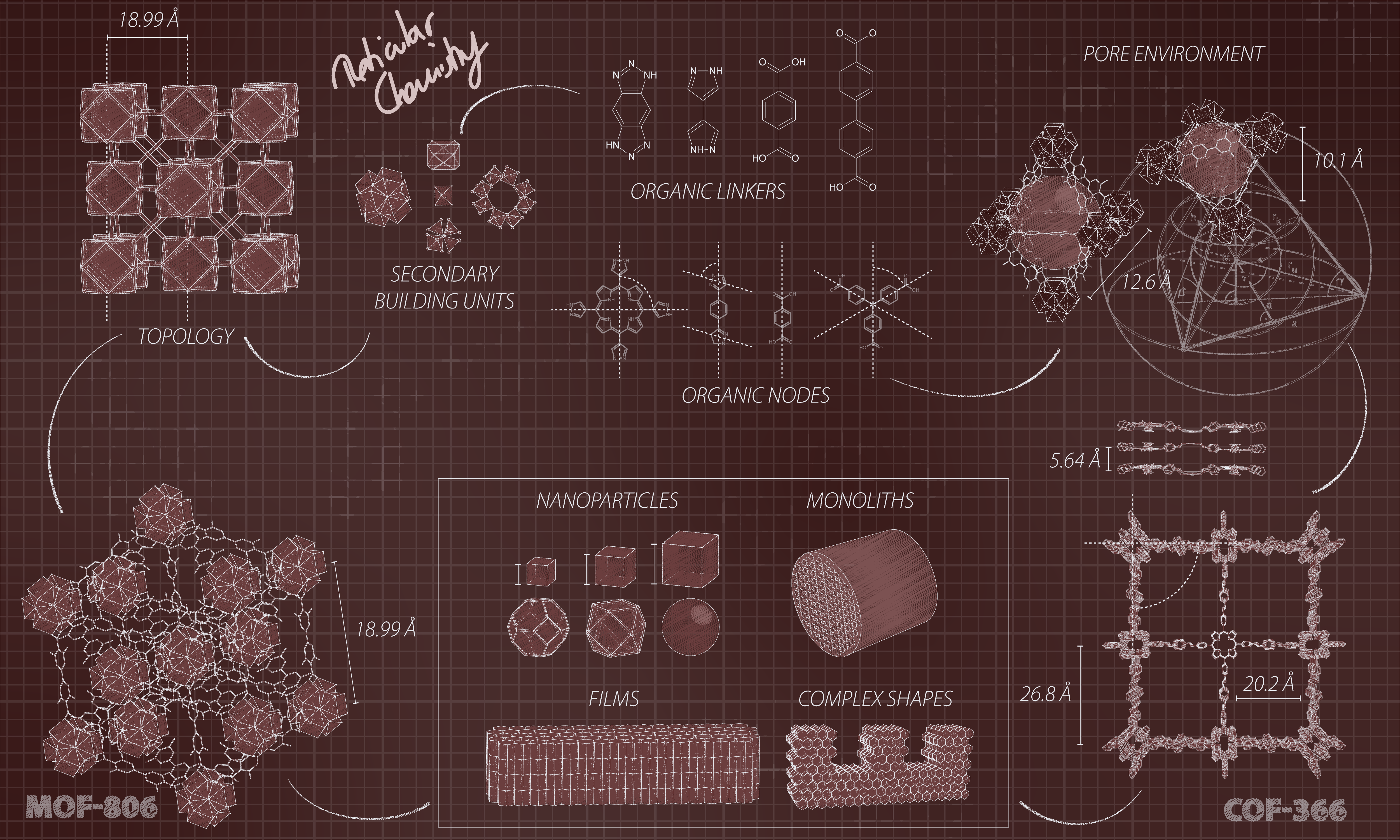25 Years of Reticular Chemistry
The design and synthesis of materials is a cornerstone of synthetic chemistry. Since its discovery a quarter of a century ago, reticular synthesis of 2D and 3D extended crystalline porous metal-organic frameworks (MOFs) and covalent organic frameworks (COFs) has been added to the repertoire of synthetic chemists. In 25 Years of Reticular Chemistry we highlight the progress that has been made in the design and synthesis of these materials, show how their pores can further be functionalized, and how complexity can be introduced into their backbones (Figure 1).
Angewandte Chemie International Edition 2021, DOI: 10.1002/anie.202101644
We show how the control over the structure of MOFs and COFs can be extended from the molecular scale to their crystal morphology and shape on the nanoscale, all the way to their shaping on the bulk scale. With this contribution we aim at summarizing the progress that has been made in this field since its inception. To best summarize the vast and interdisciplinary research in the field, we have written this manuscript with a panel of recognized experts in the various sub-disciplines of reticular synthesis.
In addition, we wrote The Current Status of MOF and COF Applications after 25 Years were wish to highlight the potential of reticular materials by identifying key milestones that have been achieved in the various disciplines but also to give a critical view on progress in moving the field from academic research toward industrial commercialization (Figure 2). In addition, we discuss the major outstanding challenges that need to be addressed in order to pave the way for industrial applications.
Angewandte Chemie International Edition 2021, DOI: 10.1002/anie.202106259
All in All, while the past 25 years have seen significant progress in the chemistry and applications of MOFs and COFs, there still remains a vast space for exploration, particularly in the context of commercialization. With respect to the emerging field of COFs, more efforts need to be devoted to fundamental research into their properties to make full use of their potential in applied research. In contrast, making use of the vast body of basic research on MOFs, identifying and optimizing materials for specific applications and moving reticular materials from the lab toward industrial applications is paramount.




